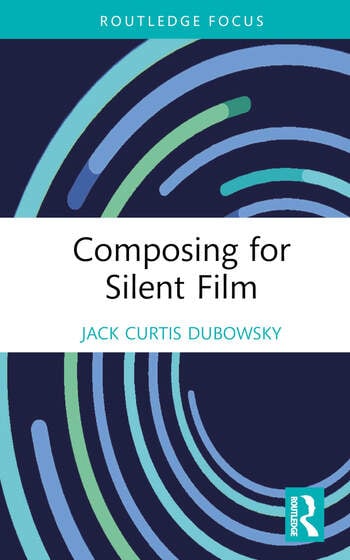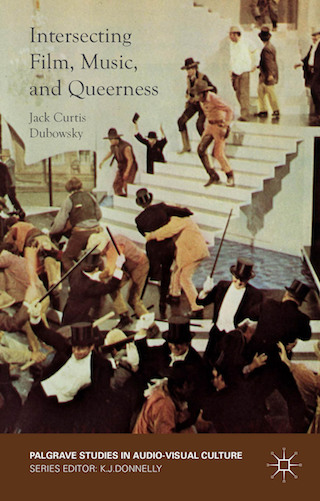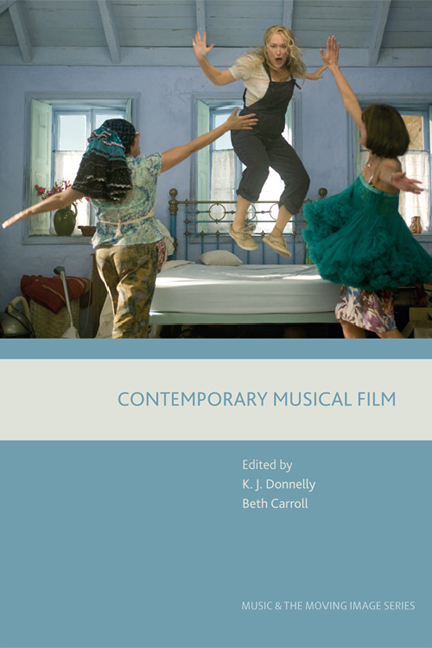
Publisher site| Amazon | MORE INFO | |
Composing for Silent Film offers insight, information, and techniques for contemporary composition, arrangement, and live score performance for period silent film. A specialized music composition guide, this book complements existing film scoring and contemporary music composition texts. This book helps today's composers better understand and correctly interpret period silent film, and to create and perform live scores that align with films' original intentions, so that audiences notice and grasp fine points of the original film. Composing for Silent Film analyzes period silent film and its conventions — from Delsarte acting gestures to period fascinations and subtexts. As a practical composition text, it weighs varying approaches, including improvisation, through-scoring, "Mickey-mousing," handling dialogue, and dividing roles amongst players. It steers composers towards informed understanding of silent film, and encourages them to deploy contemporary styles and techniques in exciting ways. For clarity and concision, examples are limited to eight canonical silents: Metropolis, Dr. Jekyll & Mr. Hyde, The Mark of Zorro, Sunrise: A Song of Two Humans, The Black Pirate, Nosferatu, The Phantom Carriage, and The Golem. |
 Publisher site| Amazon | MORE INFO | |
Composers, arrangers, conductors, session musicians, and executives worked in easy listening and scoring, complicating an academic focus that lionizes film music while ignoring or deriding easy listening. This book documents easy listening's connections with film music, an aspect overlooked in academic and popular literature. Fueled by the rise of the LP and home entertainment, easy listening became the largest midcentury commercial music market, generating more actual income for the record business than 7- inch singles. Easy listening roped in subgenres including classical, baroque, jazz, Latin, Polynesian, "exotica," rock, Broadway, and R&B, appropriated and reinterpreted just as they were for cinema. Easy listening provided opportunities in orchestral music for conservatory-trained composers. Major film composers such as Henry Mancini and Michel Legrand had a prodigious output of easy listening albums. Critics fault easy listening for structural racisms, overlooking its evolution and practitioners. Easy listening helped destabilize a tripartite record business that categorized product as race records, old time records, or general popular music. Charlie Parker's with Strings records altered the direction of jazz, profoundly influencing other performers, encouraging bold crosspollinations, and making money. The influence of technology and historical contexts of music for work and leisure are explored. Original interviews and primary sources will fascinate scholars, historians, and students of cinema, television, film scoring, and midcentury popular music. |
 Publisher site| Amazon | MORE INFO | |
Intersecting Film, Music, and Queerness (2016) uses musicology and queer theory to uncover meaning and message in canonical American cinema. This study considers how queer readings are reinforced or nuanced through analysis of musical score. Taking a broad approach to queerness that questions heteronormative and homonormative patriarchal structures, binary relationships, gender assumptions and anxieties, this book challenges existing interpretations of what is progressive and what is retrogressive in cinema. Examined films include Bride of Frankenstein, Louisiana Story, Rudolph the Red-Nosed Reindeer, Blazing Saddles, Edward Scissorhands, Brokeback Mountain, Boys Don't Cry, Transamerica, Thelma & Louise, Go Fish, and The Living End, with special attention given to films that subvert or complicate genre. Music is analyzed with concern for composition, intertextual references, absolute musical structures, song lyrics, recording, arrangement, and performance issues. This multidisciplinary work, featuring groundbreaking research, analysis, and theory, offers new close readings and a model for future scholarship. |
 Publisher site| Amazon | |
Team America: World Police expertly subverts and redacts conventions of Hollywood and Broadway musicals, mixing parody and politics in a fertile intertextual landscape. The film employs an ambiguous voice, a complicated parody of both conservative and progressive politics, and uses musical voices to indicate or reference various racisms and ironies, as well as to provoke and bait audience sensibilities. The film became hugely influential, paving the way for other comedies such as OSS 117 Le Caire: nid d'espions and The Interview. While Team America's absurdist politics grabbed most of the critical attention lavished on the film, its implementation of musical numbers was groundbreaking, traditional, effective, reverent and irreverent all at once. The story centres loosely around Broadway actor Gary, who is recruited by Team America because of acting ability he demonstrates in Lease, a show-within-a-show parody of Rent. So begins Team America as a backstage musical, a tired subgenre rejuvenated by the incisiveness of the spot-on showstopper "Everyone Has AIDS." But Team America progresses into a spy thriller cum action movie, parodied by the use of marionettes, in which situational musical numbers moderate pace, communicate emotional subtext, and provide witty commentary, as in a traditional musical. |